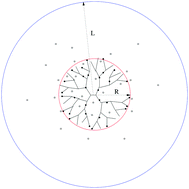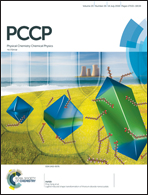Dendritic polyelectrolytes as seen by the Poisson–Boltzmann–Flory theory
Abstract
G3–G9 dendritic polyelectrolytes accompanied by counterions are investigated using the Poisson–Boltzmann–Flory theory. Within this approach we solve numerically the Poisson–Boltzmann equation for the mean electrostatic potential and minimize the Poisson–Boltzmann–Flory free energy with respect to the size of the molecules. Such a scheme enables us to inspect the conformational and electrostatic properties of the dendrimers in equilibrium based on their response to varying the dendrimer generation. The calculations indicate that the G3–G6 dendrimers exist in the polyelectrolyte regime where absorption of counterions into the volume of the molecules is minor. Trapping of ions in the interior region becomes significant for the G7–G9 dendrimers and signals the emergence of the osmotic regime. We find that the behavior of the dendritic polyelectrolytes corresponds with the degree of ion trapping. In particular, in both regimes the polyelectrolytes are swollen as compared to their neutral counterparts and the expansion factor is maximal at the crossover generation G7.



 Please wait while we load your content...
Please wait while we load your content...